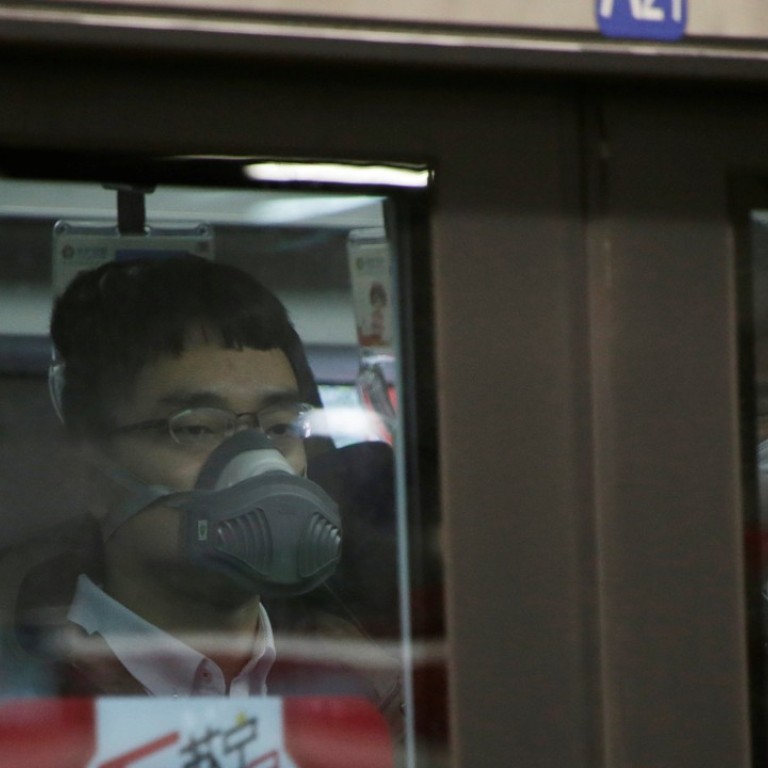
Subway pollution may raise heart disease, cancer risk for Beijing commuters, study finds
Researchers say passengers should wear face masks underground to combat higher levels of pollutants
High levels of air pollution in Beijing’s subway system could be putting commuters at higher risk of heart disease and lung cancer, according to a new study by a Chinese non-governmental think tank.
Releasing the study on Thursday, researchers from the independent Rock Environment and Energy Institute said passengers should wear face masks and the state-owned subway firm should improve ventilation to reduce exposure to the pollution.
“We can almost tell how bad it is just by smelling,” Zhao Ang, institute director and the lead author of the report, said.
The findings were based on air quality readings in congested cabins during Friday night rush hours
over 20 weeks.
The results indicated that the average level of PM2.5 pollutants – fine particles particularly hazardous to human health – was 127 micrograms per cubic metre in warmer months, or nearly twice the level outdoors.
The subway PM2.5 readings rose to 154mgm/m3 in winter, 50 per cent higher than the amount above ground in the same period.

That compares with PM2.5 readings in Toronto’s subway system of about 100mgm/m3, or 10 times to the level above ground, according to a study released earlier this year. The Spanish city of Barcelona reported PM2.5 levels peaking at about 30mgm/m3 in summer thanks to effective air conditioning systems.
Beijing has nearly 20 metro lines with more than 300 subway stations, moving more than nine million people every day.
The researchers enlisted volunteers to take the readings between October and April on 10 major subway lines, using portable monitoring devices similar to the ones deployed by US environmental authorities.
The highest pollution was recorded on Line 8 in the middle of the city, and the lowest on Line 13 going to the suburbs.
The researchers said they also canvassed more than 600 passengers and found they spent roughly two hours a day on the underground system.
After 16 years of commuting, such exposure could increase the risk of death from heart disease by 1.83 per cent and lung cancer by 2.42 per cent, the researchers calculated.

Peking University public health professor Pan Xiaochuan said the results were “trustworthy”.
“It maybe the first comprehensive investigation on subway pollution and its public health impact in China. The findings are based on reliable sampling and methodology. The evidence is strong,” he said.
But Pan said the projected health impact was based on an algorithm developed in the West, which might not be entirely applicable in China.
“The public should not take the risk figure [at face value] because the situation can vary significantly from one individual to another,” he said.
The researchers said the pollution could be caused by carriage wheels grinding along the track and crowds breathing and rubbing up against each other in confined areas.

